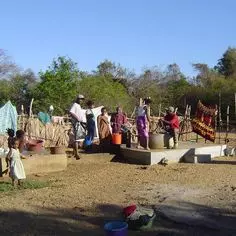
Humanitarian and Development
Place
Region of Mahajanga, Madagascar
Sponsor
Alexandra Sourzat
Grant(s)
29,000 € to the Selection Committee at 2007/12/04
Project leader
"I decided to do skills sponsoring with Ecoles du Monde."
Alexandra Sourzat
Since 1997, Écoles du Monde has been active in Madagascar, where it has carried out many projects in the Mahajanga region (in the northwest of the island) to develop the local economy of eight bush and shoreline villages. To slow down the rural exodus, the association is helping the villagers to gain their economic self-sufficiency thanks, among other factors, to microcredit and vocational training.
The NGO privileges education and has already created eight schools to provide an education to 800 children. Besides, 3,000 pupils of the Mahajanga public school already benefit from school supplies thanks to its efforts.
As to the village secondary school, it now has a dormitory to accommodate and supervise the pupils coming there from distant villages. And the youths who leave the school system can take vocational training (in farm techniques, in various crafts and fisheries) set up by the association, to enable them to exercise a trade in their village and live a decent life.
Replacing the wind generators by solar pumps
As part of its operations, Ecoles du Monde has also focused on the problem of water (only 34% of the Madagascans have access to water). The NGO, with the help of the villagers, has therefore been supervising the construction of wells, storage reservoirs and sanitary blocks in the schools for the last 10 years, sparing the children and women from the difficult burden of fetching water and considerably improving the health conditions of the population. The women, grouped in an association, have created market gardens around these wells.
Today, the new project is to provide the water supply networks of four relatively inaccessible coastal villages with solar powered pumps: Anjajavy, Ambondro, Marovaza and Antsangabé. The pumping, powered today by the wind generators, no longer meets the needs of the villagers except in periods of regular winds (six months of the year). The obsolete wind generators frequently break down and raise maintenance problems. The installation of these new pumps will help supply the water reservoirs, sources of life for the villagers, all year long.

